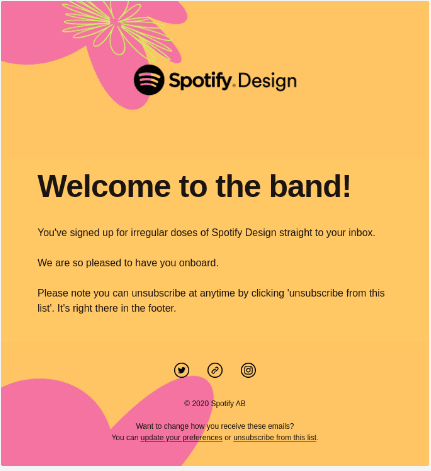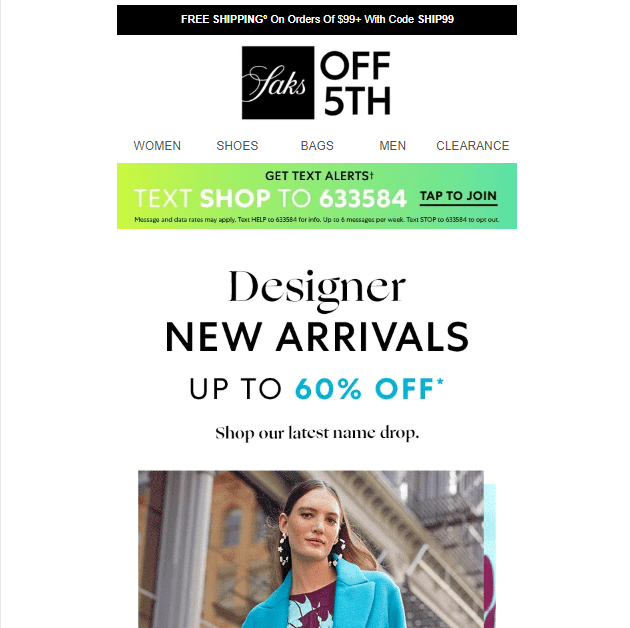Email Drip Campaigns — 3 Examples and Best Practices To Boost Customer Engagement
If you're not using email drip campaigns in your marketing strategy, you're falling behind.
Skirmantas Venckus //April 27, 2023//


Email Drip Campaigns — 3 Examples and Best Practices To Boost Customer Engagement
If you're not using email drip campaigns in your marketing strategy, you're falling behind.
Skirmantas Venckus //April 27, 2023//
If you’re not currently using email drip campaigns for your business, you’re missing out on effective ways to engage your audience and convert them to customers. But the good news is that it’s never too late to start.
We’ll cover some email drip campaign best practices and examples to help you connect with your audience in the right way and at the right time.
READ: Is B2B Email Marketing Dead?
Email drip campaigns — best practices
Here are some email drip campaign best practices you can apply to your own email marketing campaigns.
Segment your subscriber list and send personalized messages
According to Statista, over 60% of online shoppers can’t be loyal to businesses that deliver non-personalized content. With that in mind, group your recipients into different segments to help you send personalized and targeted email drip campaigns.
To achieve that, you must thoroughly understand your target audience by knowing their pain points, shopping preferences, and demographics.
For example, if it’s a cart abandonment email you’re sending, think of what problems the customer would have encountered. Maybe your shipping costs were too high, or you hadn’t clearly stated your return policy. Then, craft a personalized email addressing these issues to boost your chances of converting the prospect.
You can use an email marketing platform to engage better and understand your audience, helping you segment them into appropriate groups.
READ: Using Video in Email Marketing Campaigns: Best Practices and Benefits
Add a call-to-action in the drip marketing campaigns
Your recipients should know what they should do at the end of every email — whether signing up for a free trial or scheduling a call. So always include a call-to-action (CTA) at the end of your email drip campaigns.
Tailor your CTA buttons according to your audience’s buyer journey stage. For example, if a segment of your audience has recently signed up for your newsletters, you can ask them to follow your brand on social media. You can share a case study or a white paper if they’re at the consideration stage.
Use social proof to increase your audience’s trust and credibility
Social proof is where people are influenced to buy your products or services because they trust and follow the actions of other buyers. Giving evidence in your email drip campaigns that other consumers have used and benefited from your products establishes your company as trustworthy and reputable.
According to a 2023 BrightLocal survey, 44% of consumers are highly likely to give a positive review if they feel your business went above and beyond to offer an exceptional experience.
So, look for ways to solve your customers’ problems and give them great experiences to get positive reviews you can use to attract more prospects. For example, you can ask subscribers questions about their business challenges through interviews or questionnaires, then send them emails educating them on how to solve their issues.
READ: How Brands Can Grow Customer Loyalty and Build a Positive Reputation in 2023
3 effective drip campaign examples
Let’s look at three effective drip campaign examples to inspire yours.
Welcome drip campaign
One essential drip campaign email to send new subscribers is the welcome email. These emails are triggered once a user submits their email address or joins your newsletter.
The welcome email is your brand’s first impression with these new subscribers and sets the tone for the rest of your interactions.
Here’s an example from Spotify:

The welcome email is simple and straight to the point. It thanks the prospect for signing up, then highlights the value they’ll get from the brand and an option for unsubscribing.
Cart abandonment drip campaign
Customers abandon close to 70% of their shopping carts. But the good thing is that around 75% of such consumers typically want to return to your website and complete their purchase.
With open rates of over 49% and conversion rates of 8.38%, sending abandoned cart drip campaign emails can help you recover those would-be-lost sales.
Here’s a drip campaign email example from Society6:

Lead-Nurturing Drip Campaign
A lead-nurturing email drip campaign focuses on prospects who are interested in your products or services but have yet to buy. The email marketing strategy is to keep the leads engaged with your brand and build a relationship with them until they’re ready to purchase.
In your lead-nurturing emails, offer valuable information and attractive offers to boost your chances of persuading your customers to buy.
Here’s this lead nurturing campaign example from The 5TH offering a 60% discount for their New Arrivals:

The Bottom Line
The best practices and examples above can help you create drip email campaigns that convert your leads and prospects into customers. So, consistently offer your audience value and relevant content to help them decide to purchase. That way, you’ll be able to boost your company’s revenue.

Skirmantas Venckus is a writer by day and reader by night. He hates talking about himself in third person. He is also the growth hacker at Sender.net – the email marketing provider that is focused on user-friendliness, affordability, and utility.

























